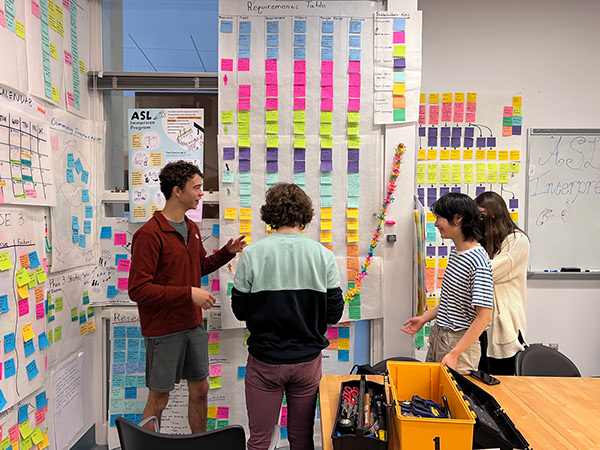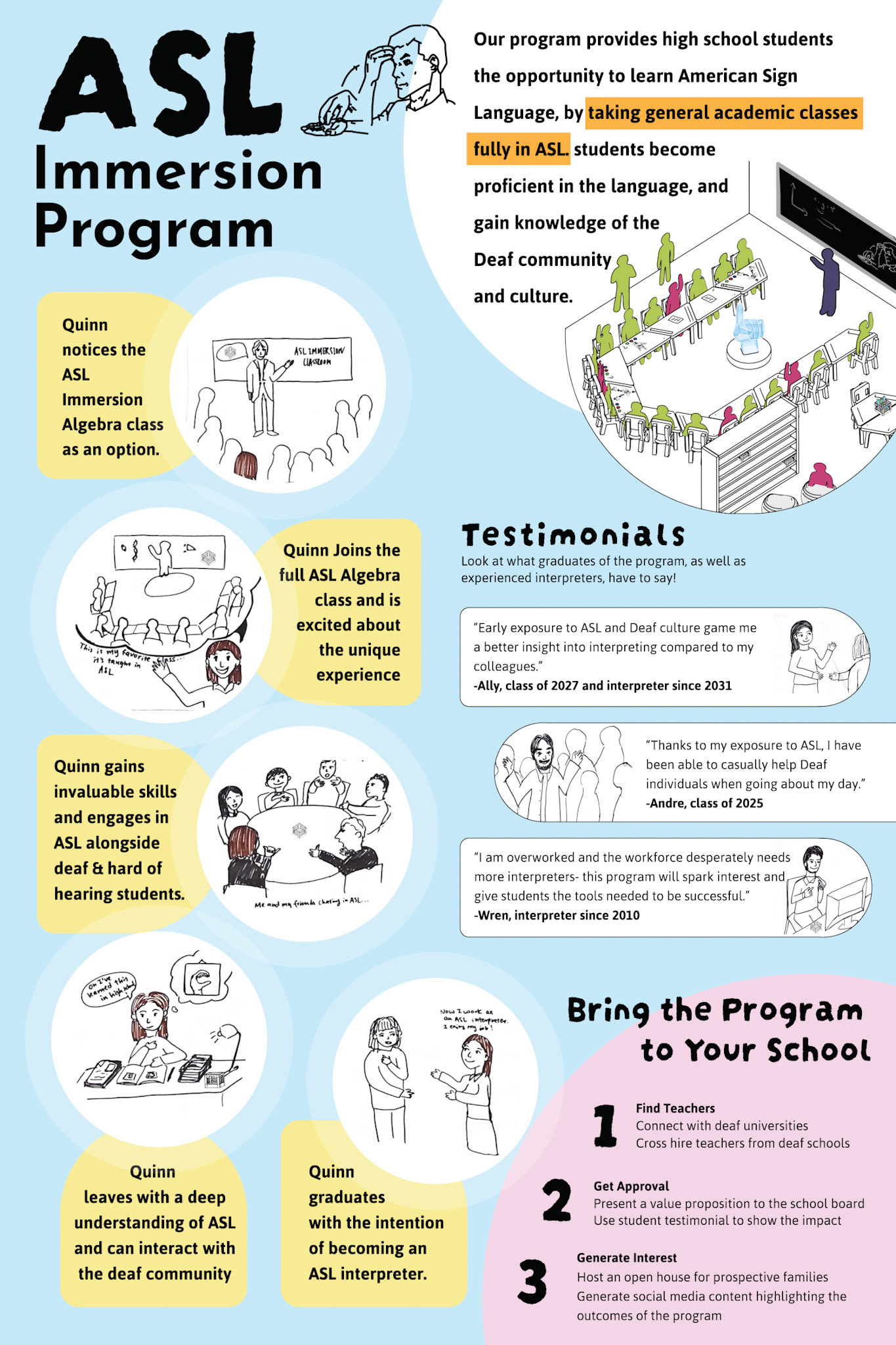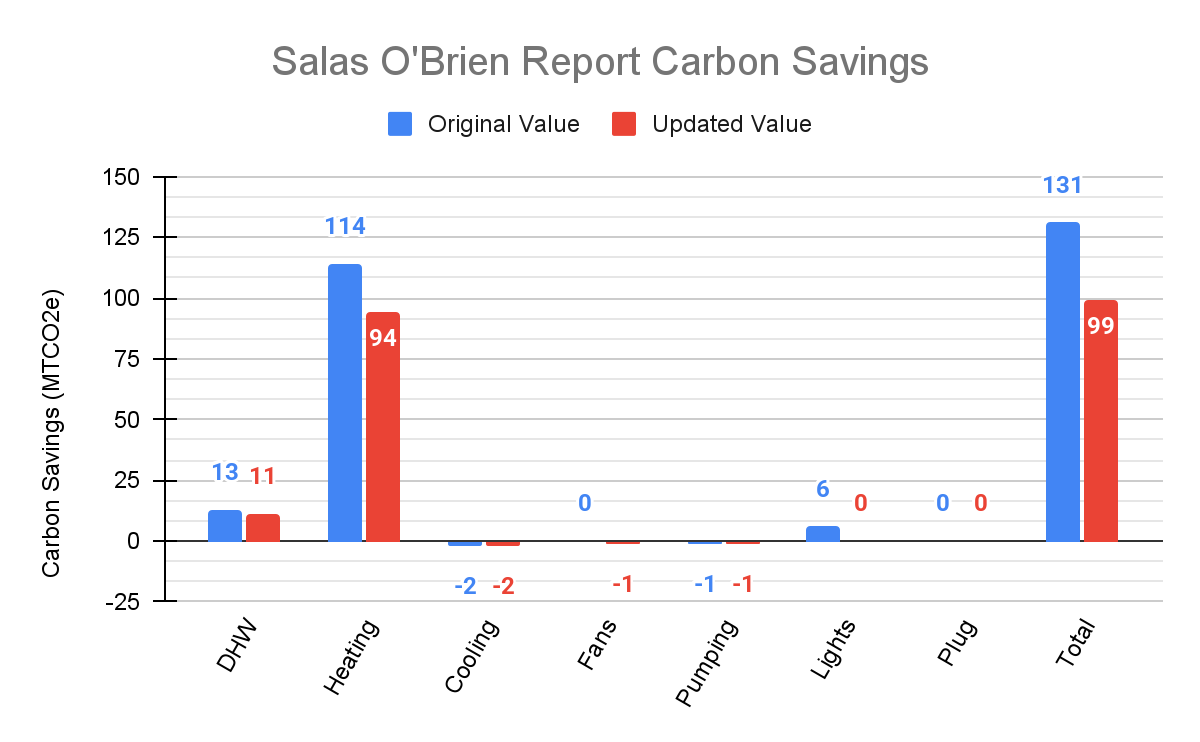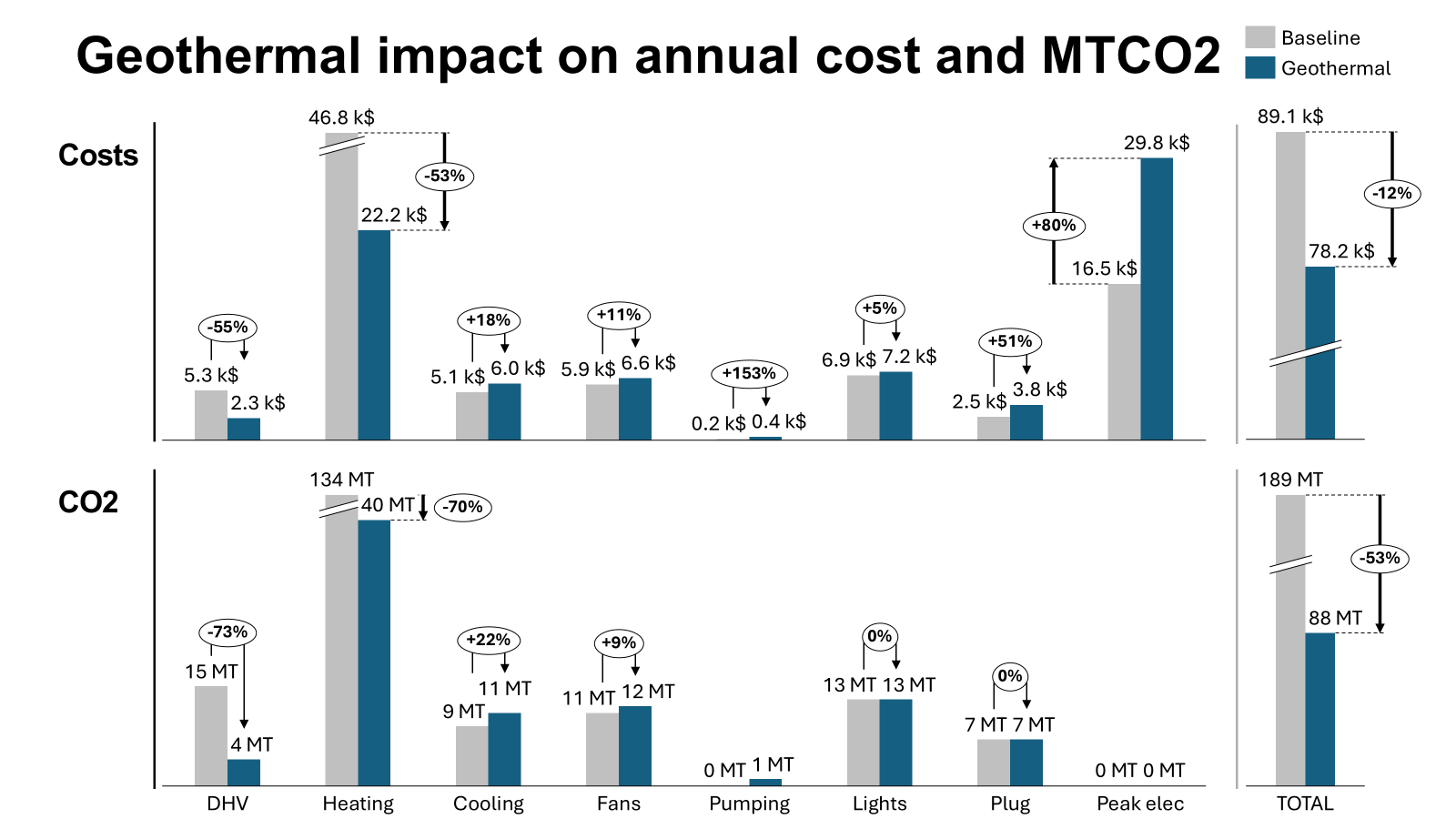Human Centered Design with ASL Interpreters
Engage with a stakeholder group to understand their pains and joys, then design interventions and products to address these



The class Collaborative Design tasks my team of 5 people to do a semester-long deep dive into the world of ASL interpreters. This course taught us how to co-design and ideate alongside a user group through 3 phases. In the first month, we completed around 10 user interviews with ASL interpreters to learn about the day-to-day lives, the challenges, and the joys that encompass being an interpreter. For stage 2, we iterated over 100 ideas that aimed to alleviate their pains and elevate their joys. We took 12 of these ideas to co-design we were got feedback and iterated on these ideas alongside interpreters. In the final stage, we took our best ideal, an ASL Immersion Program, and expanded on the idea using all that we had learned about interpreters and the greatest single passion, expanding access for members of the deaf community.
Skills and Tools: Human Centered Design, User Interviews, Personas, Design Reviews
Independent Analysis of Heat Pump Installation Project
Identify key assumptions and calculations in a consulting report and determine any misrepresentation of benefits and faults of a heat pump installation project.


The city of Boston's clean energy plan involves retrofitting numerous building in the city with geothermal heating and cooling. The first retrofit building this is being rolled out on is the JFK Elementary school. This project has been subject to loads of scrutiny as the impact on abutters was dramatically understated and the potential benefits of the project were over stated. In a team of 3, I helped go through the consulting reports, statements from abutters, and over 1500 emails from a freedom of information act to analysis the true benefits and impacts that this project has had on the community. These finding were compiled into a 35 page report that outlined many of the assumptions made by the city and contractor that overstated the amount of monetary savings that the project would provide. They also overstated energy and carbon savings. Finally, the report dives into the impact of construction on neighbors and how the failure of the city to engage with them can harm future projects the city is planning to implement on other sites in Boston.
Skills and Tools: Assumption Analysis, Thermodynamics, Finances and Incentives


